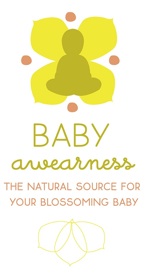An Exploration Into Snap vs. Velcro™ Closure Systems
As I began writing this, I realized that I must preface it with truth. I am NOT a veteran cloth diapering mom. As a matter of fact, I am quite the novice when it comes to cloth diapering and the many options associated with this aspect of green parenting. Over the past few days I have slowly begun transitioning my son from disposables to the ever-so-comfy pocket diaper. While I am not sure where we will land in the cloth diapering world, one thing is for sure -- if we decide to go with a traditional CD, my recent experience dictates snaps are NOT my friend! Of course, it’s up to you to decide what’s best for you and your baby.
While it may seem like something pretty silly to debate, this subject remains ever-present in women’s restrooms, locker rooms and support groups the world over. Well, maybe not locker rooms. Okay, so maybe not the world over either but this is definitely an issue that many cloth-diapering mamas seem to face. Apparently, it’s not uncommon to find yourself knee-deep in covers, liners and poo before you ever realize you prefer one over the other.
Over and over again, in our classes and in sidewalk conversations, the consistent consensus seems to be whether one should choose a Velcro™ or snap closure system.
Which one reigns supreme?
Let’s compare, shall we?
VELCRO™ Pros
• Provides an adjustable fit that you can customize to suit baby’s changing size
• Easy to use
VELCRO™ Cons
• Can be noisy and disturb baby especially in the newborn stages
• As baby gets older, may become easier for her to unfasten
• May wear out over time and need to be replaced
SNAP Pros
• More durable than Velcro™ in many cases and may last longer
• Will not attach to other diapers in the laundry
• Baby is less likely to detach snap
SNAP Cons
• Not as adjustable as Velcro™
• Harder to replace Velcro™ than snaps
Ultimately, the choice is yours. It all comes down to making a decision that best fits your wallet, lifestyle and baby. Happy snappin’! (Or ripping Velcro on and off, if you do so choose!)
~ Kennesha Buycks



